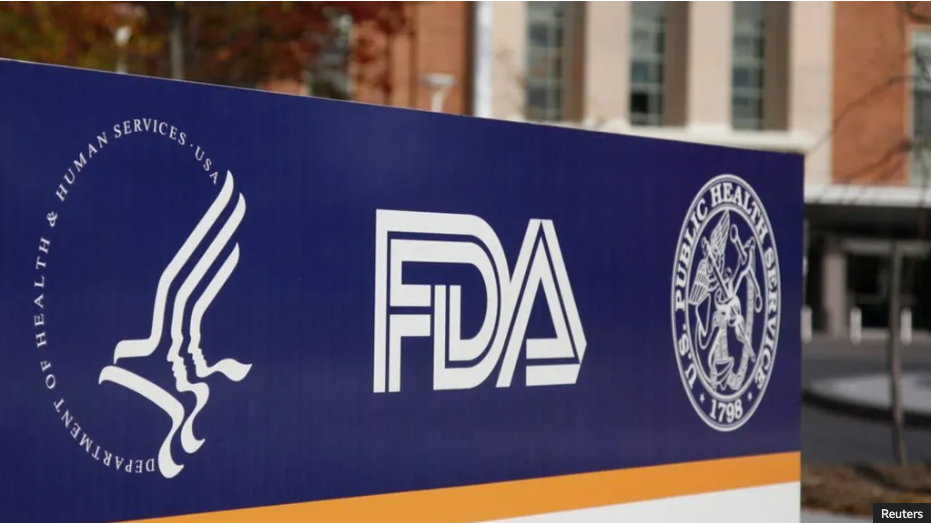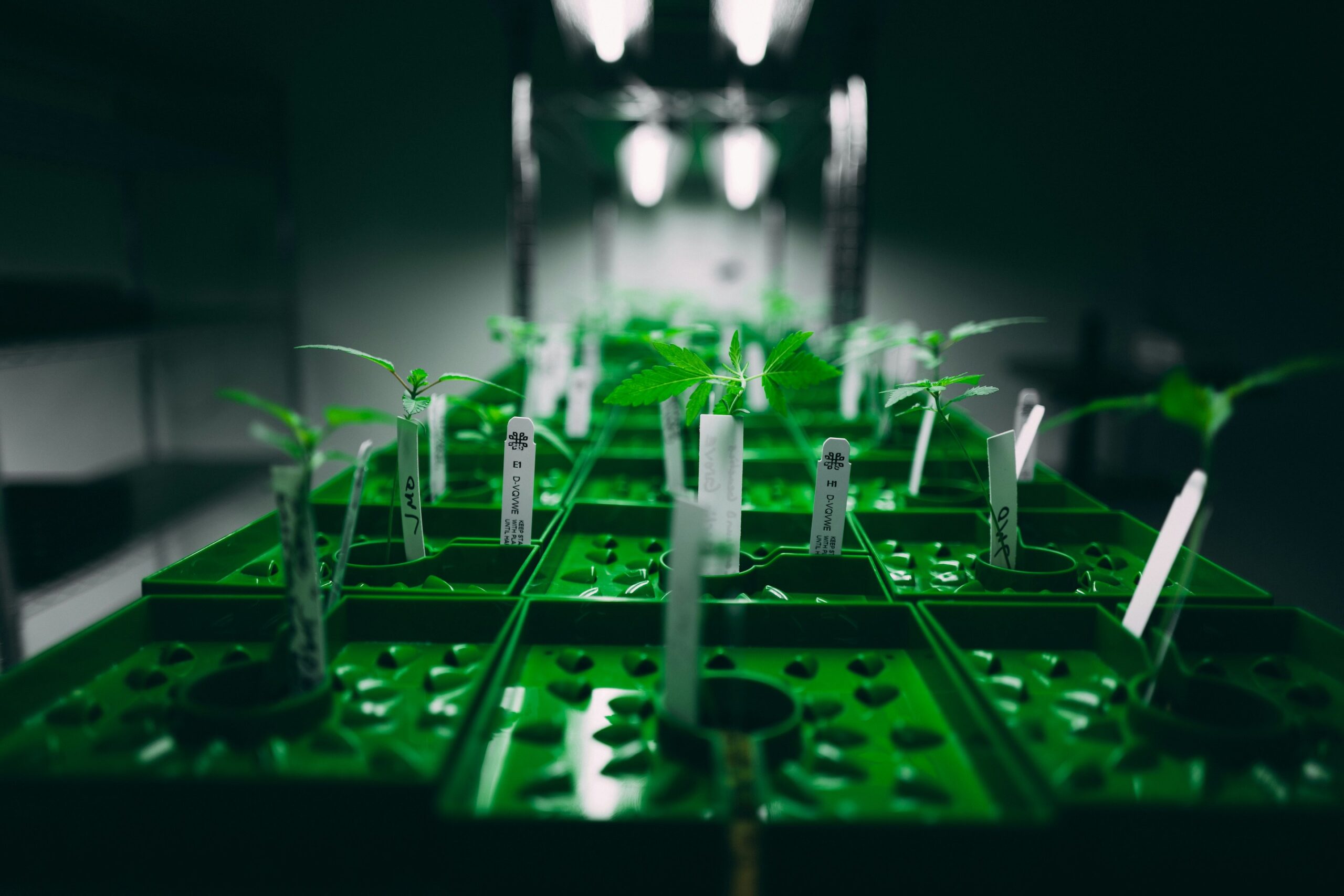July 22nd – July 29th, 2022
Effects of Cannabinol (CBN)-Based Solution in Mice
Study results indicate that the water-soluble cannabinol compound, CBNight™ does not cause significant toxicity.
Discovered nearly a century ago, cannabinol, otherwise known as CBN, is a degradation product of Δ9-tetrahydrocannabinol (Δ9-THC). [1] While most of the attention has been focused on Δ9-THC and cannabidiol (CBD), CBN is gaining increasing popularity in recent years. As such, studies have shown that CBN may have sedative, anticonvulsant, anti-inflammatory, and antibiotic properties. [2] Additionally, a study by Liang et al., showed that CBN specifically targets mitochondria and preserves mitochondrial function following insult to the cells, suggesting a potential therapeutic role in the treatment of age-associated neurodegenerative diseases. [3] Recently, CBN alone or in combination with other phytocannabinoids has been gaining popularity for its sleep and pain management benefits, although additional studies are needed to fully understand the direct effects of the cannabinoid. [4],[5] While the general thought is that these CBN-based compounds have a relatively low safety profile, it is not clear whether doses that are higher than recommended doses can lead to toxicity.
A group of researchers at Emporia State University, Kensas, aimed to determine the physiological and behavioral effects of exposure of various doses of CBNight™, a water soluble dietary supplementary by Shaman Botanicals, containing 4 mg/ml of CBN and a wide range of terpenes. [6] They randomly assigned sixty-two male mice into one of six treatment groups based on daily dosage of CBNight™ and following two weeks of delivering dosages and observing in-cage behavior, the mice were euthanized and necropsied in order to inspect their blood and organs for abnormalities. Results did not indicate statistically significant, dosage-dependent effects on body mass, blood chemistry, or behavior. However, they did observe for the first time, lower percentage of eosinophils (type of disease-fighting white blood cell) in the highest dosage groups, as well as no signs of hepatotoxicity (liver damage.)
The authors concluded: “The results of this study indicate that a water-soluble nano-preparation of CBN does not cause significant toxicity at low pharmacological or at non-pharmacological dosages in mice… As cannabinoid compounds continue to rise in popularity for recreational and medicinal usage and novel, highly bioavailable compounds continue to be produced, and continued research evaluating the safety and efficacy of them remains relevant and vital.”
Influence of Δ9-Tetrahydrocannabinol (Δ9-THC) and Cannabidiol (CBD) Administration on Macrophage Activation
Results from this study showed that the two phytocannabinoids produce similar and distinct anti-inflammatory effects.
Macrophages are specialized immune cells responsible for the detection, phagocytosis, and destruction of foreign pathogens using toll-like receptors. [7] As such, dysregulation of macrophage function has been linked to the pathogenesis of several inflammatory diseases including inflammatory bowel diseases. [8] The endocannabinoid system (ECS) is one of the many key systems in the human body which plays key roles in proper regulation of the immune system and immune response. [9] As such, it is not surprising that murine and human macrophages express cannabinoid receptors 1 and 2 (CB1R, CB2R). While CB1R are mostly expressed in the central nervous system, CB2R are found throughout the immune system. More specifically, studies have shown that CB2R in macrophages have anti-inflammatory properties while CB1R have pro-inflammatory properties and are involved in phagocytosis. [10],[11] Given the increasing attention towards the use of phytocannabinoids such as Δ9-tetrahydrocannabinol (Δ9-THC) and cannabidiol (CBD) to treat disease states, it is critical to further characterize their immune regulatory properties.
In this study, Yekhtin et al., aimed to investigate and elucidate the effects of Δ9-THC and CBD on macrophage activation and in macrophage-related inflammation. [12] Following in vitro activation of mice macrophages in the presence of Δ9-THC and CBD, the group analyzed cell phenotypes, nitric oxide secretion, cytokine secretion, levels of macrophage infiltration, and inflammatory cytokines in the blood. Results indicated an inhibition of activation-induced nitric oxide and cytokine secretion, improved clinical scores, and reduced macrophage colon infiltration. Additionally, compared to pure cannabinoids, they found higher activity associated with cannabis extracts.
The authors concluded: “Overall, our results indicate both similarities and differences between the impact of CBD- and THC-based drugs. Although all the tested treatments had an anti-inflammatory effect, their specific effects (for example, on phenotype of the cells and on cytokine production) differed. These differences may influence the clinical outcome of the treatment. We were surprised to find very similar anti-inflammatory results for the two cannabis extracts, which had diverse content of THC and CBD. This could suggest that THC/CBD content may not be the best indicator for anti-inflammatory properties of a cannabis-based drug… A better understanding of the effects of each molecule and the synergism between these molecules on the immune response will assist physicians to provide the best possible individually targeted treatment for their patients and will allow the design of new treatments.”
Can Ibuprofen and Cannabis Be Used in Combination to Reduce Pain?
Study results found that the combination of Ibuprofen and a synthetic cannabinoid (WIN) may lead to a pain relief response.
Recently, drug combinations of two or more substances with varying mechanisms of action have become an increasingly common therapeutic approach to improve efficacy and satisfy the currently unmet needs for disease treatments. [13],[14] Ibuprofen, a non-steroidal anti-inflammatory drug (NSAID) has been on the market for over 50 years and is one of the most used medications targeting mild to moderate pain. However, its use can also induce gastrointestinal and cardiovascular adverse effects. On the other hand, phytocannabinoids are widely perceived as traditional medicines used to alleviate pain in various cultures, as studies have indicated the role of CB1 and CB2 cannabinoid receptors (CB1R, CB2R) in the nociceptive signal inhibition of various types of pain. [15],[16]However, limited studies have looked at whether the combination of NSAIDs with cannabinoids can improve efficacy in pain management.
A group of researchers from Universidad de Colima in Mexico aimed to investigate the potential synergism between ibuprofen (IBU) and the synthetic cannabinoid WIN 55,212-2 (WIN) in improving pain relief. [17] They analyzed the degree of participation of the CB1R and CB2R in the possible antinociceptive synergism using an experimental model of pain in rats. Results indicated that the not only the combination of the two drugs resulted in a supra-additive response indicative of pain relief, but application of both antagonists (AM281 and AM630) reversed the synergistic effect.
The authors concluded: “The combination of IBU + WIN produced a significant antinociceptive synergistic effect in which the CB2 cannabinoid receptors were mainly involved compared to the participation of the CB1 receptors. Therefore, the combination of NSAIDs and cannabinoids administered systemically and locally, respectively, may be an option in treating inflammatory pain.”
Perceptions and Knowledge of Cannabidiol (CBD) Use: Survey Results from Parents of Pediatric Epilepsy Patients in Thailand
Survey results demonstrate a lack of knowledge regarding CBD use and its anti-seizure properties in this population.
Epilepsy is one of the common serious neurological disorders, and it is characterized by recurrent spontaneous seizures. Approximately 30% of pediatric epilepsy patients suffer from refractory epilepsy, or seizures that occur despite anti-epilepsy medications or treatment. [18] This form of epilepsy can have immense effects on a person’s social and cognitive functioning, and diminish their overall quality of life, owing to the unpredictability of their condition. The ineffectuality of anti-seizure medications has caused many patients to look for alternative therapeutic treatments, including cannabidiol (CBD) products.
Previous studies have demonstrated CBD’s ability to reduce the frequency of seizures affecting children with Dravet syndrome (DS), Lennox–Gastaut syndrome (LGS), and other forms of refractory epilepsy [19],[20]. Along those lines, the FDA has approved the use of Epidiolex, a CBD-based medication, for the treatment of seizures associated with tuberous sclerosis complex, DS, and LGS. [21] In 2019, Thailand became the first Asia-Pacific nation to legalize the medical use of CBD, with the intent to expand treatment options available to epilepsy and chronic pain patients.[22]
To understand the knowledge and perceptions of CBD use in pediatric epilepsy, Ngampoopun et al., designed and performed a cross-sectional survey of all parents or guardians of pediatric epilepsy patients at the Pediatric Neurology Clinic in Phramongkutklao Hospital in Bangkok, Thailand. [23] The survey was comprised of questions assessing demographics, clinical factors, seizure types, and knowledge and opinions of parents or guardians. Results demonstrated that only 13.65% of patients had used or were currently using CBD. Less than half of the parents were aware of CBD’s use to treat pediatric epilepsy. Additionally, responders were relatively unaware of the composition of CBD and its effects.
The authors concluded: “Our survey revealed that half of the parents of patients who previously used CBD reported reduced seizure frequency; however, no patient became seizure-free. In addition, although Thailand legalized CBD in 2019, we found significant gaps in the knowledge of parents and guardians regarding CBD use in Thailand. These findings suggest that imparting knowledge and disseminating information regarding CBD is crucial before initiating CBD use. Moreover, further evidence-based studies on CBD are warranted.”
References
[1] Chousidis I, Chatzimitakos T, Leonardos D, Filiou MD, Stalikas CD, Leonardos ID. Cannabinol in the spotlight: Toxicometabolomic study and behavioral analysis of zebrafish embryos exposed to the unknown cannabinoid. Chemosphere 2020;252:126417. DOI: 10.1016/j.chemosphere.2020.126417.
[2] Russo EB, Marcu J. Cannabis Pharmacology: The Usual Suspects and a Few Promising Leads. Adv Pharmacol 2017;80:67-134. DOI: 10.1016/bs.apha.2017.03.004.
[3] Liang Z, Soriano-Castell D, Kepchia D, et al. Cannabinol inhibits oxytosis/ferroptosis by directly targeting mitochondria independently of cannabinoid receptors. Free Radic Biol Med 2022;180:33-51. DOI: 10.1016/j.freeradbiomed.2022.01.001.
[4] Walsh JH, Maddison KJ, Rankin T, et al. Treating insomnia symptoms with medicinal cannabis: a randomized, crossover trial of the efficacy of a cannabinoid medicine compared with placebo. Sleep 2021;44(11). DOI: 10.1093/sleep/zsab149.
[5] Kaufmann R. Use of a water-soluble form of cannabinol for the treatment of sleeplessness. Int J Complement Alt Med. 2021a;14(4):186–90.
[6] Bailey MM, Emily Mills MC, Haas AE, Bailey K, Kaufmann RC. The effects of subacute exposure to a water-soluble cannabinol compound in male mice. J Cannabis Res 2022;4(1):44. DOI: 10.1186/s42238-022-00153-w.
[7] Hirayama D, Iida T, Nakase H. The Phagocytic Function of Macrophage-Enforcing Innate Immunity and Tissue Homeostasis. Int J Mol Sci 2017;19(1). DOI: 10.3390/ijms19010092.
[8] Guan Q. A Comprehensive Review and Update on the Pathogenesis of Inflammatory Bowel Disease. J Immunol Res 2019;2019:7247238. DOI: 10.1155/2019/7247238.
[9] Almogi-Hazan O, Or R. Cannabis, the Endocannabinoid System and Immunity-the Journey from the Bedside to the Bench and Back. Int J Mol Sci 2020;21(12). DOI: 10.3390/ijms21124448.
[10] Liu AP, Yuan QH, Zhang B, et al. Cannabinoid receptor 2 activation alleviates septic lung injury by promoting autophagy via inhibition of inflammatory mediator release. Cell Signal 2020;69:109556. DOI: 10.1016/j.cellsig.2020.109556.
[11] Miranda K, Mehrpouya-Bahrami P, Nagarkatti PS, Nagarkatti M. Cannabinoid Receptor 1 Blockade Attenuates Obesity and Adipose Tissue Type 1 Inflammation Through miR-30e-5p Regulation of Delta-Like-4 in Macrophages and Consequently Downregulation of Th1 Cells. Front Immunol 2019;10:1049. DOI: 10.3389/fimmu.2019.01049.
[12] Yekhtin Z, Khuja I, Meiri D, Or R, Almogi-Hazan O. Differential Effects of D9 Tetrahydrocannabinol (THC)- and Cannabidiol (CBD)-Based Cannabinoid Treatments on Macrophage Immune Function In Vitro and on Gastrointestinal Inflammation in a Murine Model. Biomedicines 2022;10(8). DOI: 10.3390/biomedicines10081793.
[13] Topuz RD, Gunduz O, Karadag CH, Ulugol A. Non-opioid Analgesics and the Endocannabinoid System. Balkan Med J 2020;37(6):309-315. DOI: 10.4274/balkanmedj.galenos.2020.2020.6.66.
[14] Cuesta SA, Meneses L. The Role of Organic Small Molecules in Pain Management. Molecules 2021;26(13). DOI: 10.3390/molecules26134029.
[15] Clayton N, Marshall FH, Bountra C, O’Shaughnessy CT. CB1 and CB2 cannabinoid receptors are implicated in inflammatory pain. Pain 2002;96(3):253-260. DOI: 10.1016/S0304-3959(01)00454-7.
[16] Li AL, Carey LM, Mackie K, Hohmann AG. Cannabinoid CB2 Agonist GW405833 Suppresses Inflammatory and Neuropathic Pain through a CB1 Mechanism that is Independent of CB2 Receptors in Mice. J Pharmacol Exp Ther 2017;362(2):296-305. DOI: 10.1124/jpet.117.241901.
[17] Diaz-Reval MI, Cardenas Y, Huerta M, et al. Activation of Peripheral Cannabinoid Receptors Synergizes the Effect of Systemic Ibuprofen in a Pain Model in Rat. Pharmaceuticals (Basel) 2022;15(8). DOI: 10.3390/ph15080910.
[18] Kwan P, Arzimanoglou A, Berg AT, et al. Definition of drug resistant epilepsy: consensus proposal by the ad hoc Task Force of the ILAE Commission on Therapeutic Strategies. Epilepsia 2010;51(6):1069-77. DOI: 10.1111/j.1528-1167.2009.02397.x.
[19] Ligresti A, De Petrocellis L, Di Marzo V. From Phytocannabinoids to Cannabinoid Receptors and Endocannabinoids: Pleiotropic Physiological and Pathological Roles Through Complex Pharmacology. Physiol Rev 2016;96(4):1593-659. DOI: 10.1152/physrev.00002.2016.
[20] Naziroglu M. TRPV1 Channel: A Potential Drug Target for Treating Epilepsy. Curr Neuropharmacol 2015;13(2):239-47. DOI: 10.2174/1570159×13666150216222543.
[21] https://www.fda.gov/news-events/press-announcements/fda-approves-new-indication-drug-containing-active-ingredient-derived-cannabis-treat-seizures-rare, assessed on July 29th, 2022
[22] https://agfundernews.com/a-mini-guide-to-cannabis-in-asia, assessed on July 29th, 2022
[23] Ngampoopun M, Nabangchang C, Suwanpakdee P. Survey of local cannabidiol use in parents of children with epilepsy in Thailand: the prevalence, perceptions, and knowledge. J Cannabis Res 2022;4(1):43. DOI: 10.1186/s42238-022-00155-8.






